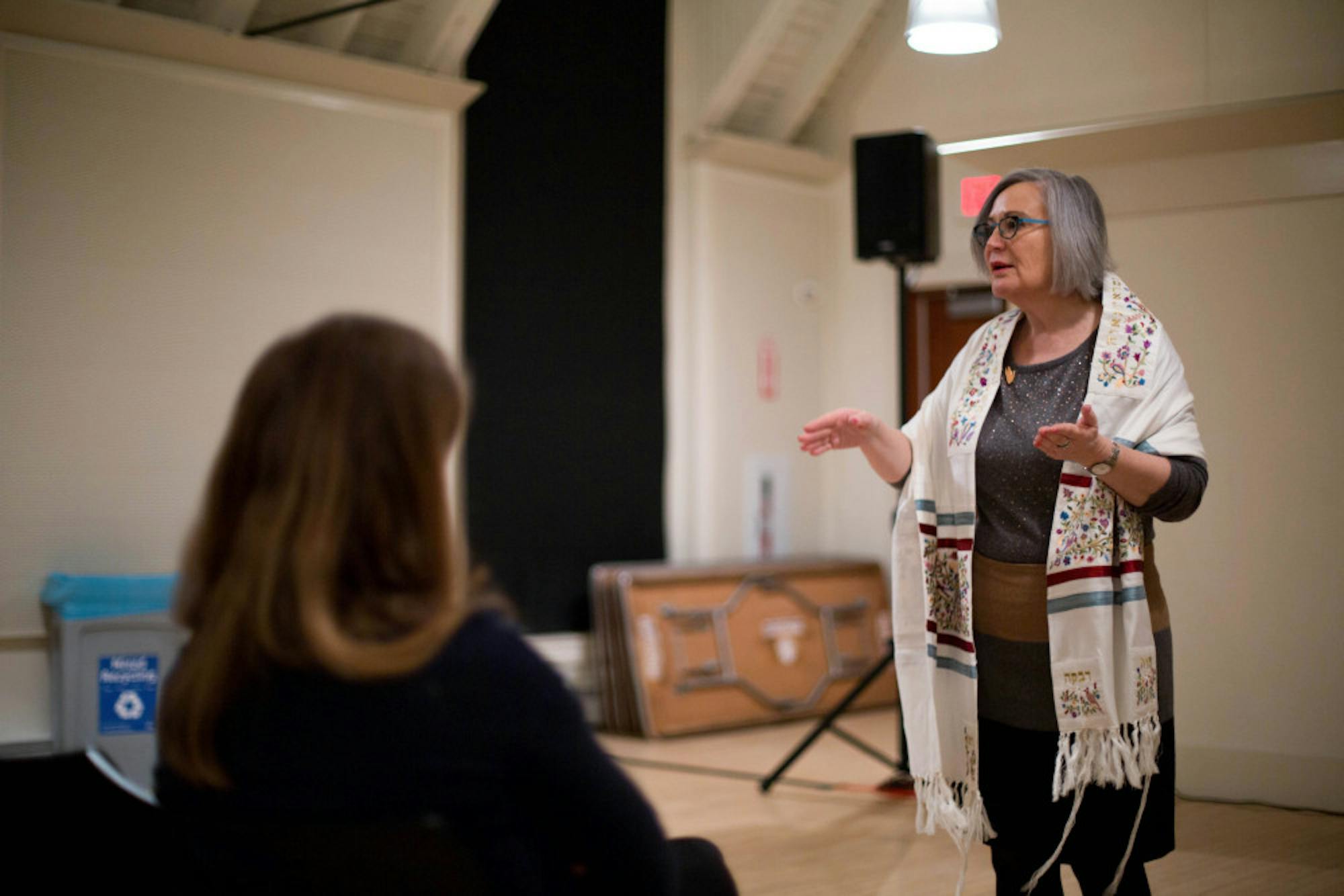Lesley Sachs, executive director of Women of the Wall, an organization that advocates and organizes for the rights of women to pray freely at Jerusalem’s Western Wall, spoke about her organization and its movement at the Interfaith Center Wednesday night.
The event was hosted by the Tufts Students for Two States coalition. The coalition is led by Tufts Hillel, also includes Tufts Friends of Israel and J Street U Tufts, and is part of the Visions of Peace initiative.
Junior Sophia Lloyd-Thomas, co-president of Friends of Israel, introduced Sachs, who has served as the director of Women of the Wall since 2008. Previously, she worked at the Israel Women’s Network, served as executive director of the Israel Religious Action Center and received the National Council of Jewish Women's Jewel Bellush Outstanding Israeli Feminist Award in 2014.
After a brief video showing men mistreating women trying to pray with a Torah at the Wall, known in Hebrew as the Kotel, Sachs began to recount the history of her organization’s more than 30-year battle to have the same rights to pray as men.
She explained that the rules that govern conduct at the Wall are rooted in a tradition defined by the ultra-Orthodox rabbis who have served as the Wall’s administrators since 1967. Sachs questioned this characteristic of the Wall.
“Who decides that the custom of the place is the ultra-Orthodox custom?” she asked.
Over time, Sachs said, the women’s section has shrunk after starting off the same size as the men's section. She also noted that the dividing wall between the men’s and women’s sections grew to a current height of seven feet.
Sachs explained that she and the rest of Women of the Wall are fighting for four rights currently denied to them: t'filah, or the right to pray out loud; the tefillin, ritual objects that ultra-Orthodox Jews do not allow women to wear; the tallit, a prayer shawl that women are not allowed to wear at the Wall; and the Torah, which women are not allowed to bring to the wall.
Sachs said that she and the Women of the Wall have fought for these rights through acts of civil disobedience.
"[I] was arrested four times for daring to wrap myself in this tallit,” she said, showing attendees a tallit made specifically for Women of the Wall.
She later mentioned a recent arrest for smuggling a Torah into the women’s area.
Sachs attributed a great deal of importance to these arrests and the global attention they drew. She explained that the Israeli police, faced with a public relations crisis because of repeated arrests and releases of organization members, decided to take some of the women, including herself, to court.
She explained that ultimately, an appellate court sided with the women, ruling that women have the right to pray how they chose in the women’s section as long as no alternate space was available.
After this ruling, Sachs said that Israeli Prime Minister Benjamin Netanyahu reached out to the women and other Jewish groups to try and find a solution to the religious tensions. She said that negotiations lasted three years, and resulted in an agreement that she was happy with. The agreement, passed almost two years ago, included plans to create an egalitarian section for prayer located at a nearby archaeological site called Robinson’s Arch.
“It’s a good agreement because it honors the religious rights of everybody,” she said.
The agreement was frozen by Netanyahu's Cabinet before any progress was made, a result she blamed on the strong ultra-Orthodox presence in the government.
Even with this setback, Sachs expressed pride in the work that the Women of the Wall has done and continues to do. She shared that this December, the organization is fighting to get a chanukiah, a traditional candelabrum used during Chanukkah, in the women’s section during the holiday. Traditionally there has only been one in the men’s section, and women have been unable to light it as per the holiday tradition.
Following Sachs' remarks, sophomore Hanna Carr shared an experience she had with Women of the Wall in Jerusalem in 2014, when women smuggled a tiny Torah into the women’s area.
Carr found the experience empowering.
“It was this incredible show of agency,” she said. “This is our Torah ... [The experience] really made me feel like I was part of a chain of Jewish women.”
Sachs believes that the Women of the Wall movement transcends purely religious issues.
“This is not a religious battle, this is a political battle,” she said.
She explained that at heart, it is rooted in the question of the power dynamics at the important religious site.
"Who is running the Mecca of the Jewish people, the Western Wall?" she asked. "Who has the power there?”
Lesley Sachs discusses the battle for women’s rights at the Western Wall

In the Tufts Interfaith Center, Tufts Students for Two States presents Women of the Wall with speaker Lesley Sachs on Nov. 29.





